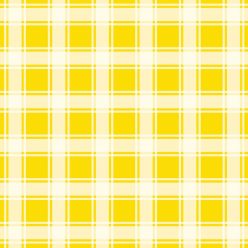All those moments will be lost in time, like tears in rain.
Blade Runner is a sci-fi classic that addresses an age-old debate about the ethics behind artificial intelligence. It’s a simple storyline presented in a slightly confusing manner. I have to admit, it was a little bit difficult to grasp what was going on at first.
Essentially, blade runners are these sort of robot assassins (humans who exterminate robots). Humanoid bioengineered robots, called “replicants”, are stationed in other planets too dangerous for humans to work. They have a lifespan of 4 years in order to avoid them further developing their own emotional responses. Aware of their mortality, replicants started escaping to Earth to try to extend their lives. Blade runners are then engaged to “retire” these escapees.
The film follows a tired ex-cop on his supposedly last blade runner job. He is tasked to hunt down 4 runaway replicants. Throughout the movie, the audience is weighed down with questions of humanity and ethics, as the replicants are hauntingly very human-like, with as much want to live as we do.
Ultimately, I think that the central theme of Blade Runner is humanity. What makes a human human? In the film, the Voight-Kampff test, an empathy test, is used to distinguish replicants from humans.
However, the replicants appear to care for each other and are worried of each others’ lives, doing anything to survive. This is juxtaposed against human characters who are cold and seem to have no compassion.
Here are a few dialogue parts or scenes which I feel stood out in highlighting the film’s idea about humanity and technology.
Ok so I find it interesting that at first, the movie establishes the replicants as cold-hearted, violent and destructive. The dialogue here reveals not only background information about the replicants’ origins to the audience, but also shows the clear division between the scared old man, who is human, and the cold-hearted, manipulative and emotionless Roy and Leon, who are replicants.
This is the first scene in which it is revealed how replicants, specifically the newer models, are very capable of human emotions. This establishes a dilemma of their identity and their rights. Rachael desperately reasons that she is human, and provides proof, only to be shot down by Deckard who reveals the truth behind her memories. She tears up, which is unlikely of a robot.
In this next scene, Pris, a pleasure replicant, meets J.F. Sebastian, a genetic designer whose life is also cut short due to an illness that progresses aging. The way that Pris was hiding in the trash not only induces compassion from the viewers, but also, I feel, is an illustration of how the humans in the film consider replicants like her as trash and are disposable.
One of the most visually stunning parts of the film. Also very dramatically shows how Zhora, a replicant, flees for her life as a cold, lifeless mob of people look on and go about their dreary lives. She seems to be bursting with life in her final moments, breaking through multiple glass windows, adding to the drama.
One of my favorite scenes. I think the monologue was delivered really well. Roy accepts his fate and dies, and although he has been the main antagonist throughout the film, I can’t help but be emotionally scarred because of his death. This ties back to the theme of humanity. What does it mean to be human? Our emotions? Our actions? Our experiences? Our history?
It also messes with my brain and heart as I struggle to make sense of the ethics behind artificial intelligence and genetic engineering. What if this really comes true in the future? How do we establish boundaries? Ah, headache.
All in all, I think that the film made good use of all of its elements to deliver their message. From the portrayal of characters, their interaction with each other and not to mention the style and props and lighting to enhance the moods or infuse emotion to the scenes, viewers are brought into a possible future and made to reflect on their own humanity.
There were more dialogue scenes that revealed information about the characters, story and theme, but writing everything would probably be one super long essay. But yeah, here are a few of the scenes which I thought were pretty good!























































